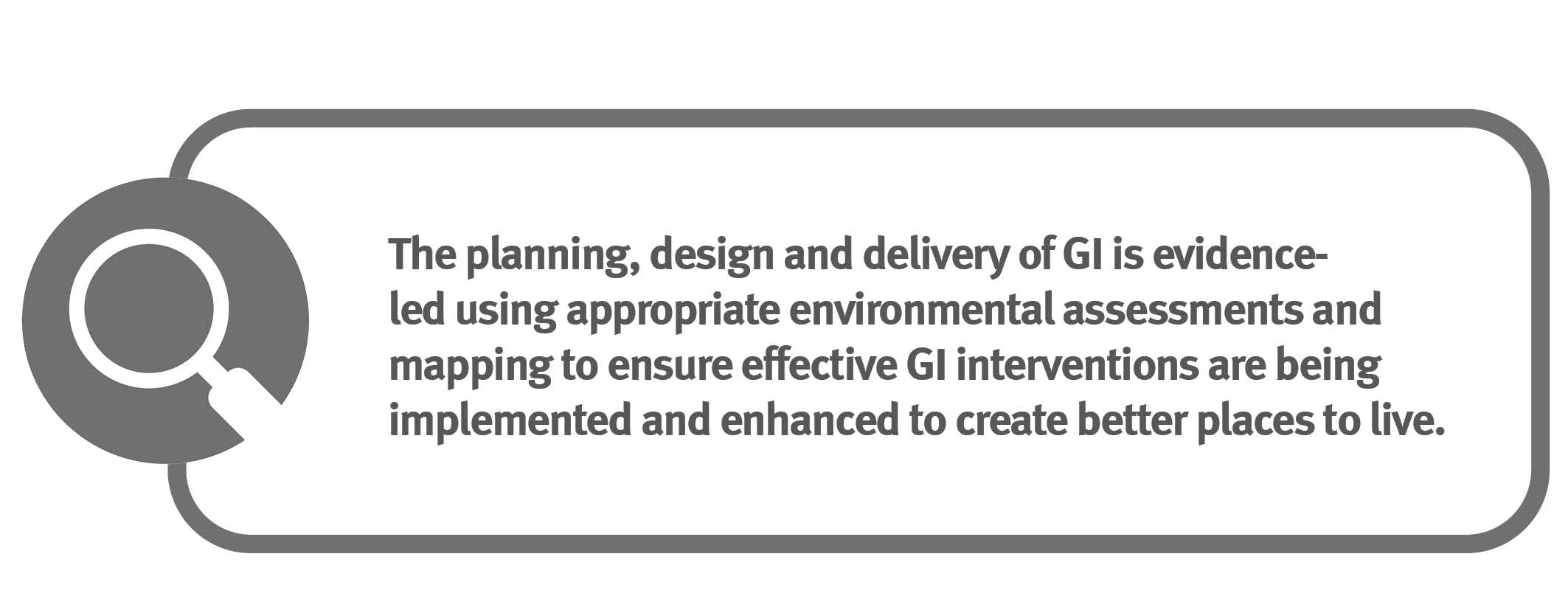Principle 2: Evidence-Led
Standard
Why does it matter?
Evidence is essential for understanding the GI that currently exists across Essex and assessing the areas that need to be prioritised to improve GI coverage.
An evidence-led approach helps make more informed and therefore better decisions for GI to have maximum impact, informing action that has the desired impact. It also helps create stronger policies that provides clear guidance for GI.
Evidence should be based on recent and reliable data to make informed decisions. Evidence can be quantitative (e.g., facts and figures, data, measurements, etc.) and it can be qualitative (e.g., people’s survey responses). It should ideally incorporate both quantitative and qualitative data from a broad range of sources.
Good quality, relevant and up to date evidence underpins all standards.

Meeting the principle
A GI audit (or equivalent) needs to be completed to outline and assess the existing site GI. Where possible, existing GI is to be incorporated as part of the design and if the removal of high value GI is unavoidable then a suitable location will need to be identified to replace to equal or enhanced quality.
Early engagement with relevant people is expected to provide a strong evidence base to help establish any gaps in GI. A Community GI Needs Assessment can help to deliver GI for specific community needs. For example, by providing opportunities for improved health and well-being and access to nature. The data will need to be reviewed and consolidated to then develop a community action plan, which prioritise needs and can inform GI design and policies.
Proposals are expected to be informed by existing data and strategies, such as, the Essex Green Infrastructure Strategy. In addition, some Local Planning Authorities have undertaken green/open space, play, sport and infrastructure assessment/study. A Biodiversity Metric can be used to calculate biodiversity losses and gains for habitats. This evidence-led approach will ensure development proposals result in biodiversity net-gain, looking at both quantity and quality of biodiversity.
GI must be considered at key stages throughout the planning process and the relevant level of detail must be submitted as part of an application. The delivery of GI also needs to be considered across the construction phases to protect natural assets on the site. The long-term maintenance and management of GI also needs to be considered. A monitoring and evaluation process is in place to review and update evidence.
Page updated: 4/04/2023
